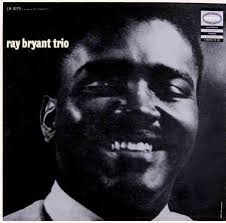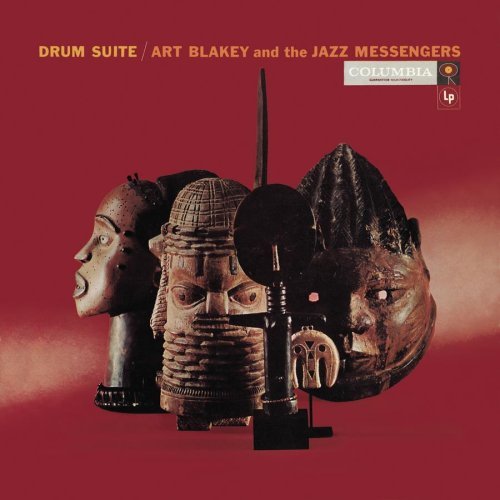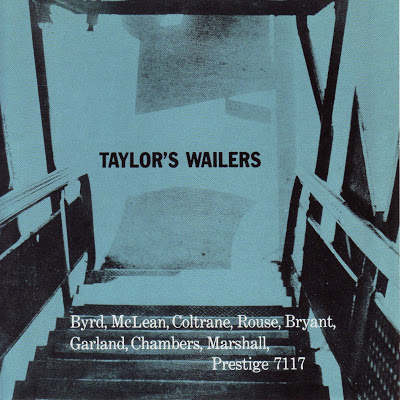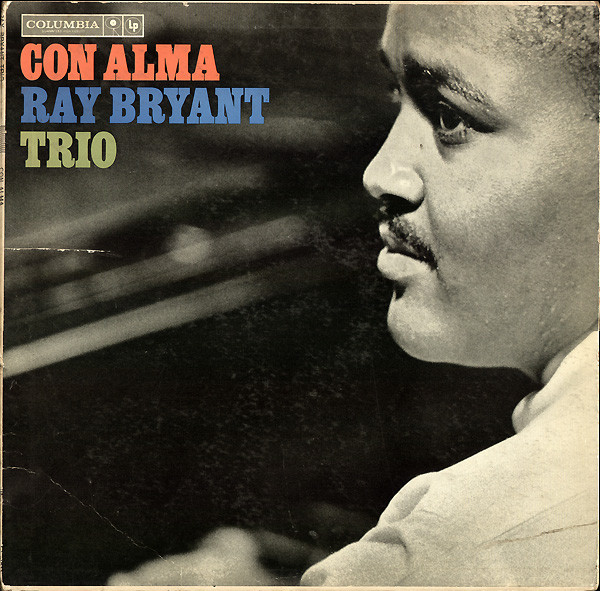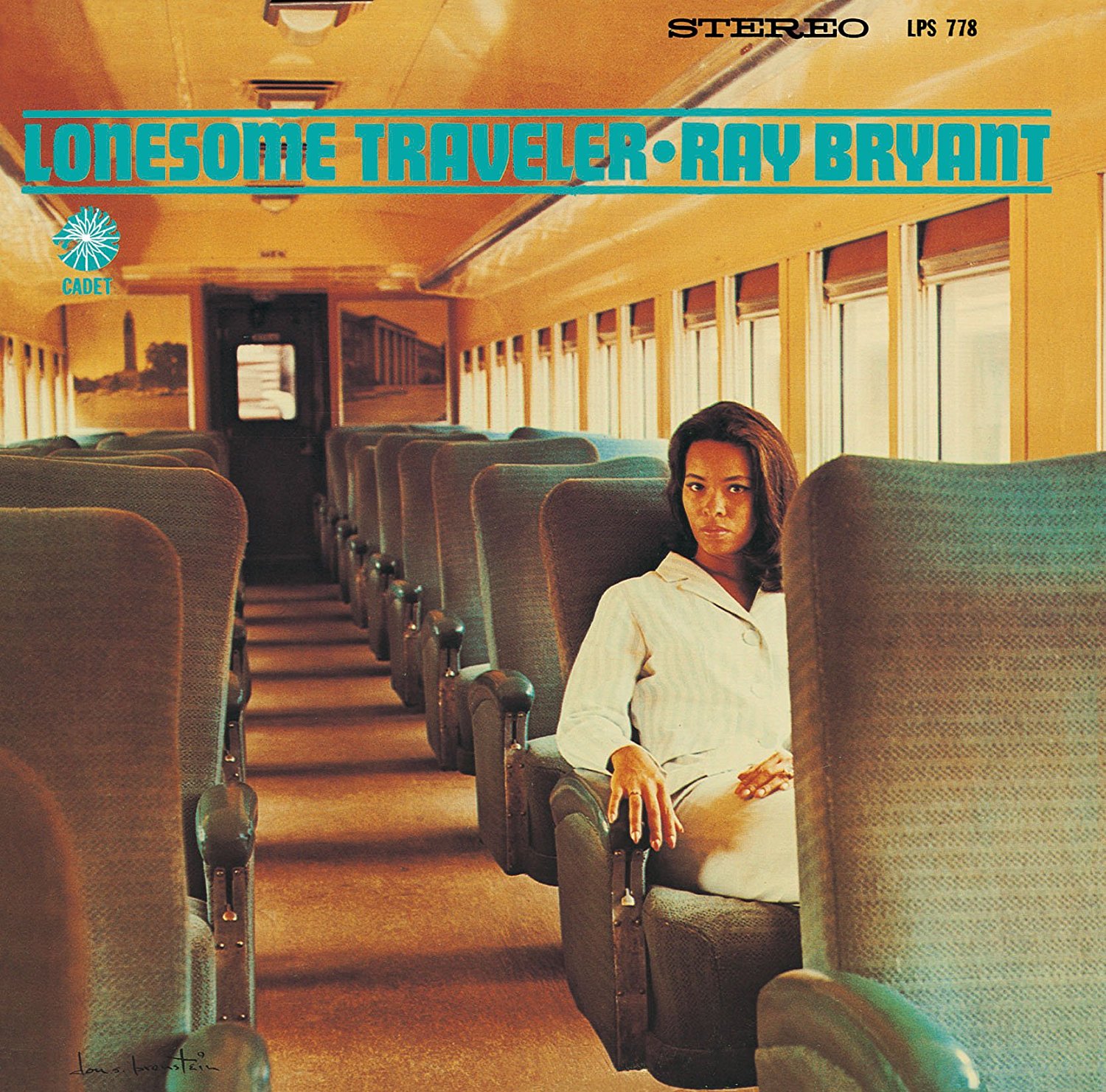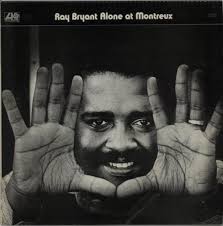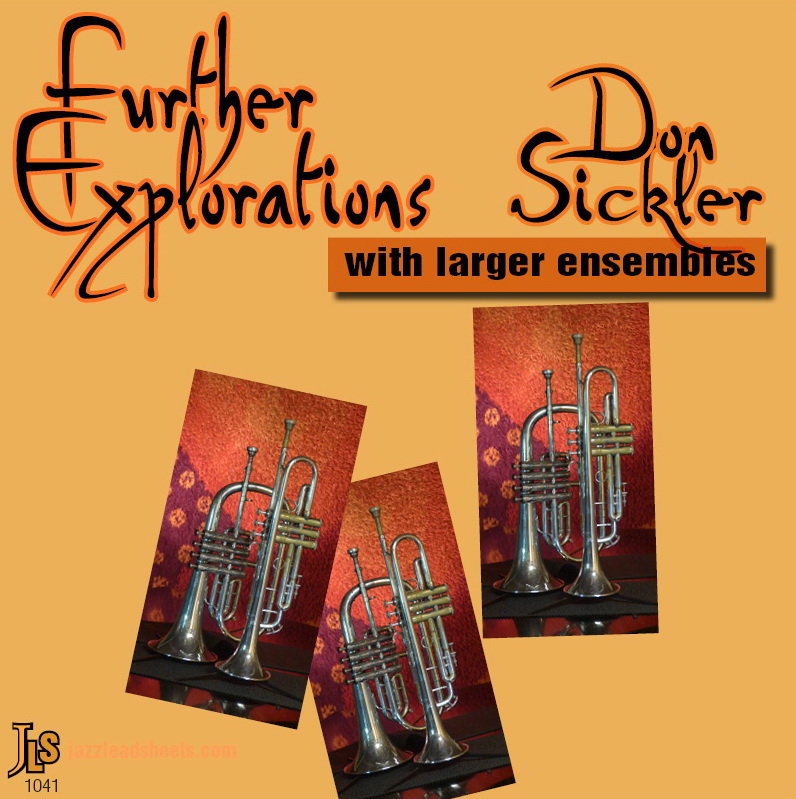Cubano Chant – Ray Bryant
This Ray Bryant classic melody starts call-and-response. The two-measure response stays the same, but check out the imaginative variations in the two-measure call. Cubano Chant captures the bright spirit of Cuban dance music as fantasized by America, then mixes it up with some blues and soul. We originally started with just Jo Jones Plus Two (Ray, and his brother Tommy on bass). Now we want to give you a more complete perspective of this great gem, from the first recording through eight recordings with Ray Bryant, so you can compare the varied ways he starts his melody. Also, Ray's solo piano arrangement functions as as a score to help you understand the harmonic, melodic and rhythmic details.
- Recording: Cal Tjader - Ritmo Caliente
- Recorded on: November 11, 1955
- Label: Fantasy (3-216)
- Concert Key: E-flat minor
- Vocal Range: , to
- Style: Latin (Mambo)
- Flute - Jerome Richardson
- Vibes - Cal Tjader
- Piano - Manuel Duran
- Bass - Al McKibbon
- Conga - Armando Peraza
Video
- Description
- Historical Notes
- Solos
- Piano Corner
- Bass Corner
- Drum Corner
- Guitar Corner
- Inside & Beyond
- Minus You
for tempo and orchestration comparison:
tempo: ca. 180
intro: doubl- time feel percussion [10 measures]
in melody: solo flute with no pick-ups into response: add piano and bass
out melody: call—vibes over percussion with pick ups into response; add piano and bass
Note: lead sheets and piano solo shown under each album are identical. If you purchase one, a checkmark will appear in all product lists.
In Ray's words [from the liner notes of a re-release of Ray's "Con Alma" album:] 'Cubano Chant' was a little theme that was running through my mind which I would sit down at the piano and play once in a while. I just kept fooling around with it and finally developed it into a real song form. I did not write it as a Latin tune—I was playing it like a gospel chant—when Cal Tjader heard it. He played it a while and suggested that I use a Latin rhythm and call it 'Cubano Chant.'
Intro: Originally, Ray had no written intro. Group recordings had percussion setting up the start of his melody. Ray's use of an introduction other than percussion started with his 1961 "Con Alma" album.
Check out Ray's 1972 Montreux performance on video from his "Alone At Montreux" album (above right, scroll down). Ray said that spirited intro was the way he felt at that performance. He normally liked it much simpler.
Listen to Kenny Drew, Jr.'s recording of Ray's Piano Solo Arrangement in the clips below. If you look at the arrangement while listening to Kenny's recording, you'll see that the bass line is simpler. However, Kenny asked if he could play the bass line in octaves, making it a little more forceful. I said, if that's the way you hear it, go for it: CLIP
If you compare Ray's recordings of Cubano Chant with his solo piano arrangement, you'll find other interesting elements that he added, like a delightful second eight-measure theme added to the intro: CLIP
Here's the melody, so you can compare it with the melody played on other recorded performances: CLIP.
Related Songs
Email Send Cubano Chant to a friend
- Recording: Ray Bryant - Ray Bryant Trio
- Recorded on: May 3, 1956
- Label: Epic (LN 3279)
- Concert Key: E-flat minor
- Vocal Range: , to
- Style: Latin (Mambo)
- Piano - Ray Bryant
- Bass - Wyatt Ruther
- Drums - Jo Jones
- Bongos - Candido Camero
Video
- Description
- Historical Notes
- Solos
- Piano Corner
- Bass Corner
- Drum Corner
- Guitar Corner
- Inside & Beyond
- Minus You
for tempo and orchestration comparison:
tempo: ca. 174
intro: bongos [4 measures]
melody: piano over bongos with no pick ups into response; add bass only until bridge
Note: lead sheets and piano solo shown under each album are identical. If you purchase one, a checkmark will appear in all product lists.
This, Ray's second album for the Epic label, "Ray Bryant Trio" also includes Pawn Ticket and a version of Philadelphia Bound from an earlier session with Kenny Clarke on drums.
Intro: Originally, Ray had no written intro. Group recordings had percussion setting up the start of his melody. Ray's use of an introduction other than percussion started with his 1961 "Con Alma" album.
Check out Ray's 1972 Montreux performance on video from his "Alone At Montreux" album (above right, scroll down). Ray said that spirited intro was the way he felt at that performance. He normally liked it much simpler.
Listen to Kenny Drew, Jr.'s recording of Ray's Piano Solo Arrangement in the clips below. If you look at the arrangement while listening to Kenny's recording, you'll see that the bass line is simpler. However, Kenny asked if he could play the bass line in octaves, making it a little more forceful. I said, if that's the way you hear it, go for it: CLIP
If you compare Ray's recordings of Cubano Chant with his solo piano arrangement, you'll find other interesting elements that he added, like a delightful second eight-measure theme added to the intro: CLIP
Here's the melody, so you can compare it with the melody played on other recorded performances: CLIP.
Related Songs
Email Send Cubano Chant to a friend
- Recording: Art Blakey - Drum Suite
- Recorded on: February 22, 1957
- Label: Columbia (CL 1002)
- Concert Key: E-flat minor
- Vocal Range: , to
- Style: Latin (Mambo)
- Piano - Ray Bryant
- Bass - Oscar Pettiford
- Drums - Art Blakey, Jo Jones, Specs Wright
- Conga, Percussion - Candido Camero
- Bongos, Percussion - Sabu Martinez
Video
- Description
- Historical Notes
- Solos
- Piano Corner
- Bass Corner
- Drum Corner
- Guitar Corner
- Inside & Beyond
- Minus You
for tempo and orchestration comparison:
tempo: ca. 180
intro: conga [8 measures]
melody: call—piano over conga with pick ups into response; add voices
Note: lead sheets and piano solo shown under each album are identical. If you purchase one, a checkmark will appear in all product lists.
Intro: Originally, Ray had no written intro. Group recordings had percussion setting up the start of his melody. Ray's use of an introduction other than percussion started with his 1961 "Con Alma" album.
Check out Ray's 1972 Montreux performance on video from his "Alone At Montreux" album (above right, scroll down). Ray said that spirited intro was the way he felt at that performance. He normally liked it much simpler.
Listen to Kenny Drew, Jr.'s recording of Ray's Piano Solo Arrangement in the clips below. If you look at the arrangement while listening to Kenny's recording, you'll see that the bass line is simpler. However, Kenny asked if he could play the bass line in octaves, making it a little more forceful. I said, if that's the way you hear it, go for it: CLIP
If you compare Ray's recordings of Cubano Chant with his solo piano arrangement, you'll find other interesting elements that he added, like a delightful second eight-measure theme added to the intro: CLIP
Here's the melody, so you can compare it with the melody played on other recorded performances: CLIP.
Related Songs
Email Send Cubano Chant to a friend
- Recording: Art Taylor - Taylor's Wailers
- Recorded on: February 25, 1957
- Label: Prestige (PRLP 7117)
- Concert Key: E-flat minor
- Vocal Range: , to
- Style: Latin (Mambo)
- Trumpet - Donald Byrd
- Alto Sax - Jackie McLean
- Tenor Sax - Charlie Rouse
- Piano - Ray Bryant
- Bass - Wendell Marshall
- Drums - Art Taylor
Purchase Cubano Chant - Ray Bryant
Purchasing this song through our affiliate links with certain retailers provides jazzleadsheets.com with additional support to help keep us bringing you the best lead sheets available. Thank you!
Video
- Description
- Historical Notes
- Solos
- Piano Corner
- Bass Corner
- Drum Corner
- Guitar Corner
- Inside & Beyond
- Minus You
tempo: ca. 174
intro: drums [4 measures]
melody: call—piano over drums with pick ups into response; horns and rest of ensemble
Note: lead sheets and piano solo shown under each album are identical. If you purchase one, a checkmark will appear in all product lists.
Only three days later Ray is back in the studio recording Cubano Chant again, this time on drummer Art Taylor's "Taylor's Wailers" session. Check out his recording history with Byrd / Rouse / McLean / and A.T. This was Ray's second album with both Taylor and Jackie McLean; the first was a relatively obscure Miles Davis/Milt Jackson session in 1955. Ray did not otherwise record with either Jackie McLean or Charlie Rouse. The rhythm section from this session played on Art Blakey's second percussion ensemble album "Orgy In Rhythm" ten days later, as well as with Donald Byrd on the third, "Holiday For Skins," in November 1958.
Intro: Originally, Ray had no written intro. Group recordings had percussion setting up the start of his melody. Ray's use of an introduction other than percussion started with his 1961 "Con Alma" album.
Check out Ray's 1972 Montreux performance on video from his "Alone At Montreux" album (above right, scroll down). Ray said that spirited intro was the way he felt at that performance. He normally liked it much simpler.
Listen to Kenny Drew, Jr.'s recording of Ray's Piano Solo Arrangement in the clips below. If you look at the arrangement while listening to Kenny's recording, you'll see that the bass line is simpler. However, Kenny asked if he could play the bass line in octaves, making it a little more forceful. I said, if that's the way you hear it, go for it: CLIP
If you compare Ray's recordings of Cubano Chant with his solo piano arrangement, you'll find other interesting elements that he added, like a delightful second eight-measure theme added to the intro: CLIP
Here's the melody, so you can compare it with the melody played on other recorded performances: CLIP.
Related Songs
Email Send Cubano Chant to a friend
- Recording: Jo Jones - Jo Jones Plus Two
- Recorded on: April 30, 1958
- Label: Vanguard (VRS 8525)
- Concert Key: E-flat minor
- Vocal Range: , to
- Style: Latin (Mambo)
- Piano - Ray Bryant
- Bass - Tommy Bryant
- Drums - Jo Jones
Video
- Description
- Historical Notes
- Solos
- Piano Corner
- Bass Corner
- Drum Corner
- Guitar Corner
- Inside & Beyond
- Minus You
The solo section is a 32-measure form. The A and C sections (D and F on the lead sheet) are similar to "rhythm" changes but with minor instead of major tonic chords on the first and third measures. On the bridge, the changes are similar to the B section of the head, simplified in the first half and then with some added passing chords. The first chord of the bridge is A♭7 on the solos as opposed to A♭ minor for the head.
On the recording, Jo Jones does his two drum solo choruses in Latin, so the return of the melody (Latin) is no surprise, but the last soloist can be swing as well, if desired, going right into the return of the stop time melody. The last A section of the opening melody is extended to 14 measures: the 14th measure is a swing solo break, which sets up the solo section in swing. The last A section of the out melody is further extended, with some great Ray Bryant left hand fills which are also notated in the C treble clef lead sheet. This is a classic that you'll enjoy playing.
Note: lead sheets and piano solo shown under each album are identical. If you purchase one, a checkmark will appear in all product lists.
Vocal version: We also have a vocal version of this composition, with lyric by L. Aziza Miller. Take a listen to Tina May's recording of One Fine Day with Ray playing piano.
Intro: Originally, Ray had no written intro. Group recordings had percussion setting up the start of his melody. Ray's use of an introduction other than percussion started with his 1961 "Con Alma" album.
Check out Ray's 1972 Montreux performance on video from his "Alone At Montreux" album (above right, scroll down). Ray said that spirited intro was the way he felt at that performance. He normally liked it much simpler.
Listen to Kenny Drew, Jr.'s recording of Ray's Piano Solo Arrangement in the clips below. If you look at the arrangement while listening to Kenny's recording, you'll see that the bass line is simpler. However, Kenny asked if he could play the bass line in octaves, making it a little more forceful. I said, if that's the way you hear it, go for it: CLIP
If you compare Ray's recordings of Cubano Chant with his solo piano arrangement, you'll find other interesting elements that he added, like a delightful second eight-measure theme added to the intro: CLIP
Here's the melody, so you can compare it with the melody played on other recorded performances: CLIP.
Related Songs
Email Send Cubano Chant to a friend
- Recording: Ray Bryant - Con Alma
- Recorded on: January 26, 1961
- Label: Columbia (CL 1633)
- Concert Key: E-flat minor
- Vocal Range: , to
- Style: Latin (Mambo)
- Piano - Ray Bryant
- Bass - Bill Lee
- Drums - Mickey Roker
Video
- Description
- Historical Notes
- Solos
- Piano Corner
- Bass Corner
- Drum Corner
- Guitar Corner
- Inside & Beyond
- Minus You
tempo: ca. 224
intro: starts with bass line over light drums [16 measures], add piano chords [16 measures]
melody: call—piano under bass line with staccato pick ups into response
Note: lead sheets and piano solo shown under each album are identical. If you purchase one, a checkmark will appear in all product lists.
Intro: Originally, Ray had no written intro. Group recordings had percussion setting up the start of his melody. Ray's use of an introduction other than percussion started with his 1961 "Con Alma" album.
Check out Ray's 1972 Montreux performance on video from his "Alone At Montreux" album (above right, scroll down). Ray said that spirited intro was the way he felt at that performance. He normally liked it much simpler.
Listen to Kenny Drew, Jr.'s recording of Ray's Piano Solo Arrangement in the clips below. If you look at the arrangement while listening to Kenny's recording, you'll see that the bass line is simpler. However, Kenny asked if he could play the bass line in octaves, making it a little more forceful. I said, if that's the way you hear it, go for it: CLIP
If you compare Ray's recordings of Cubano Chant with his solo piano arrangement, you'll find other interesting elements that he added, like a delightful second eight-measure theme added to the intro: CLIP
Here's the melody, so you can compare it with the melody played on other recorded performances: CLIP.
Related Songs
Email Send Cubano Chant to a friend
- Recording: Ray Bryant - Lonesome Traveller
- Recorded on: September 1, 1966
- Label: Cadet (LP 778)
- Concert Key: E-flat minor
- Vocal Range: , to
- Style: Latin (Mambo)
- Flugelhorn - Clark Terry
- Trumpet - Snooky Young
- Piano - Ray Bryant
- Bass - Jimmy Rowser
- Drums - Freddie Waits
Video
- Description
- Historical Notes
- Solos
- Piano Corner
- Bass Corner
- Drum Corner
- Guitar Corner
- Inside & Beyond
- Minus You
tempo: ca. 200
intro: trio [8 measures]
melody: piano over drums with pick ups into responss—horns
Note: lead sheets and piano solo shown under each album are identical. If you purchase one, a checkmark will appear in all product lists.
Snooky was on two more of Ray's sessions, one on December 8, 1966: that time Art Farmer was the other trumpet player, with Freddie Waits on drums. In September of 1968, Snooky was on Ray's "Up Above The Rock" album, with Ron Carter and Grady Tate in the rhythm section. Drummer Freddie Waits also continued working and recording with the Ray Bryant Trio, with Rufus Reid on Bass. Both of these albums were for the Cadet label.
Intro: Originally, Ray had no written intro. Group recordings had percussion setting up the start of his melody. Ray's use of an introduction other than percussion started with his 1961 "Con Alma" album.
Check out Ray's 1972 Montreux performance on video from his "Alone At Montreux" album (above right, scroll down). Ray said that spirited intro was the way he felt at that performance. He normally liked it much simpler.
Listen to Kenny Drew, Jr.'s recording of Ray's Piano Solo Arrangement in the clips below. If you look at the arrangement while listening to Kenny's recording, you'll see that the bass line is simpler. However, Kenny asked if he could play the bass line in octaves, making it a little more forceful. I said, if that's the way you hear it, go for it: CLIP
If you compare Ray's recordings of Cubano Chant with his solo piano arrangement, you'll find other interesting elements that he added, like a delightful second eight-measure theme added to the intro: CLIP
Here's the melody, so you can compare it with the melody played on other recorded performances: CLIP.
Related Songs
Email Send Cubano Chant to a friend
- Recording: Ray Bryant - Alone At Montreux
- Recorded on: June 23, 1972
- Label: Atlantic (SD 1626)
- Concert Key: E-flat minor
- Vocal Range: , to
- Style: Latin (Mambo)
- Piano - Ray Bryant
- Description
- Historical Notes
- Solos
- Piano Corner
- Bass Corner
- Drum Corner
- Guitar Corner
- Inside & Beyond
- Minus You
tempo: ca. 192
intro: solo piano [16 measures]
melody: solo piano
Note: lead sheets and piano solo shown under each album are identical. If you purchase one, a checkmark will appear in all product lists.
Piano Corner
Note from Don Sickler: This is Ray's own solo piano arrangement of his classic and popular composition. Ray worked very closely with me to get his music documented, starting in the late 1980s. Knowing I wanted solo piano arrangements of his compositions as well as a correct lead sheet, Ray often enjoyed this opportunity to refine little elements of his piano arrangements until he got them just the way he wanted. Then, he'd meticulously go over the music plates for the whole arrangement to make sure I got everything right.
Intro: Originally, Ray had no written intro. Group recordings had percussion setting up the start of his melody. Ray's use of an introduction other than percussion started with his 1961 "Con Alma" album.
Check out Ray's 1972 Montreux performance on video from his "Alone At Montreux" album (above right, scroll down). Ray said that spirited intro was the way he felt at that performance. He normally liked it much simpler.
Listen to Kenny Drew, Jr.'s recording of Ray's Piano Solo Arrangement in the clips below. If you look at the arrangement while listening to Kenny's recording, you'll see that the bass line is simpler. However, Kenny asked if he could play the bass line in octaves, making it a little more forceful. I said, if that's the way you hear it, go for it: CLIP
If you compare Ray's recordings of Cubano Chant with his solo piano arrangement, you'll find other interesting elements that he added, like a delightful second eight-measure theme added to the intro: CLIP
Here's the melody, so you can compare it with the melody played on other recorded performances: CLIP.
Related Songs
Email Send Cubano Chant to a friend
- Recording: Don Sickler - Further Explorations With Larger Ensembles
- Recorded on: November 22-24, 2002
- Label: jazzleadsheets.com (JLS 1041)
- Concert Key: A minor
- Vocal Range: , to
- Style: Latin (Mambo)
- Piano - Ray Bryant
- Trumpet & Flugelhorn - Don Sickler
- Alto Sax - Bobby Porcelli
- Tenor Sax - Patience Higgins
- Baritone Sax - Jay Brandford
- Bass - Tim Givens
- Drums - Vince Cherico
- Arranger - Don Sickler
Video
- Description
- Historical Notes
- Solos
- Piano Corner
- Bass Corner
- Drum Corner
- Guitar Corner
- Inside & Beyond
- Minus You
tempo: ca. 192
intro: 4 measure pattern—bass line with chords over percussion [16 measures] add horns [16 measures]
melody: flugelhorn melody over four-measure intro pattern
This resulted not only in a track in a new key, but also made a great Minus You track for any instrumentalist to play along with.
Note from Don Sickler: Being able to play and solo on a song in different keys strengthens your knowledge of the song, so it was a no brainer for me to go back to Rudy Van Gelder's studio in 2017, this time with flugelhorn in hand, to create an instrumental Cubano Chant recording with Ray's 2002 track (in A-minor).
Don Sickler: This arrangement is also available with lyrics (see One Fine Day.) When I first approached Ray with the idea of a Bryant Songbook project with singer Tina May (thus creating an album with lyrics added to Ray's compositions), Ray was all for it, as long as he would be able to approve the lyrics. Ray had already approved the L. Aziza Miller lyric for Cubano Chant several years before, and also Fleurine's lyric to Chicken An' Dumplins (see Meant To Be!).
But then I hit Ray with the project shocker: his songs were going to have be be recorded in different keys to fit Tina May's range. At first Ray said that would make it "impossible" for him. With his perfect pitch, he couldn't imagine his music in different keys. However, once I got him to sit down with Tina and do some experimenting with keys, instead of fighting for his original key, he was elated to find the different keys were giving him fresh ideas to explore his compositions in new ways.
For the Minus Melody version, there's a 16-bar instrumental introduction that sets the Latin groove, then one time through the melody, one solo chorus, a return to the melody at the bridge, then the Coda and ending.
Related Songs
Email Send Cubano Chant to a friend
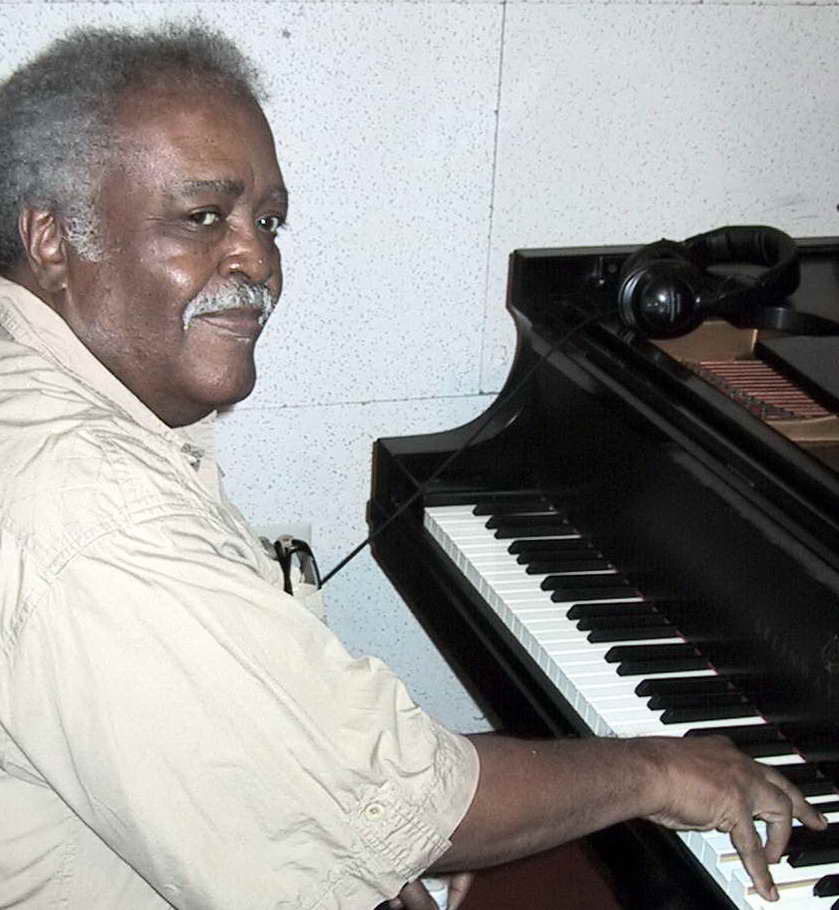
Ray Bryant
December 24, 1931 – June 2, 2011
Following performances in his native Philadelphia with guitarist Tiny Grimes and as house pianist at the Blue Note Club with Charlie Parker, Lester Young, Miles Davis and others, Ray Bryant came to New York in the mid-1950s. His first jazz recording session in New York was with Toots Thielemans (August, 1955) for Columbia Records. That session led to his own trio sessions as well as sessions with vocalist Betty Carter for Epic Records in May and June ("Meet Betty Carter and Ray Bryant"). On August 5, 1955, Ray recorded with Miles Davis, and on December 2, 1955, with Sonny Rollins, both for Prestige Records. Read more...


